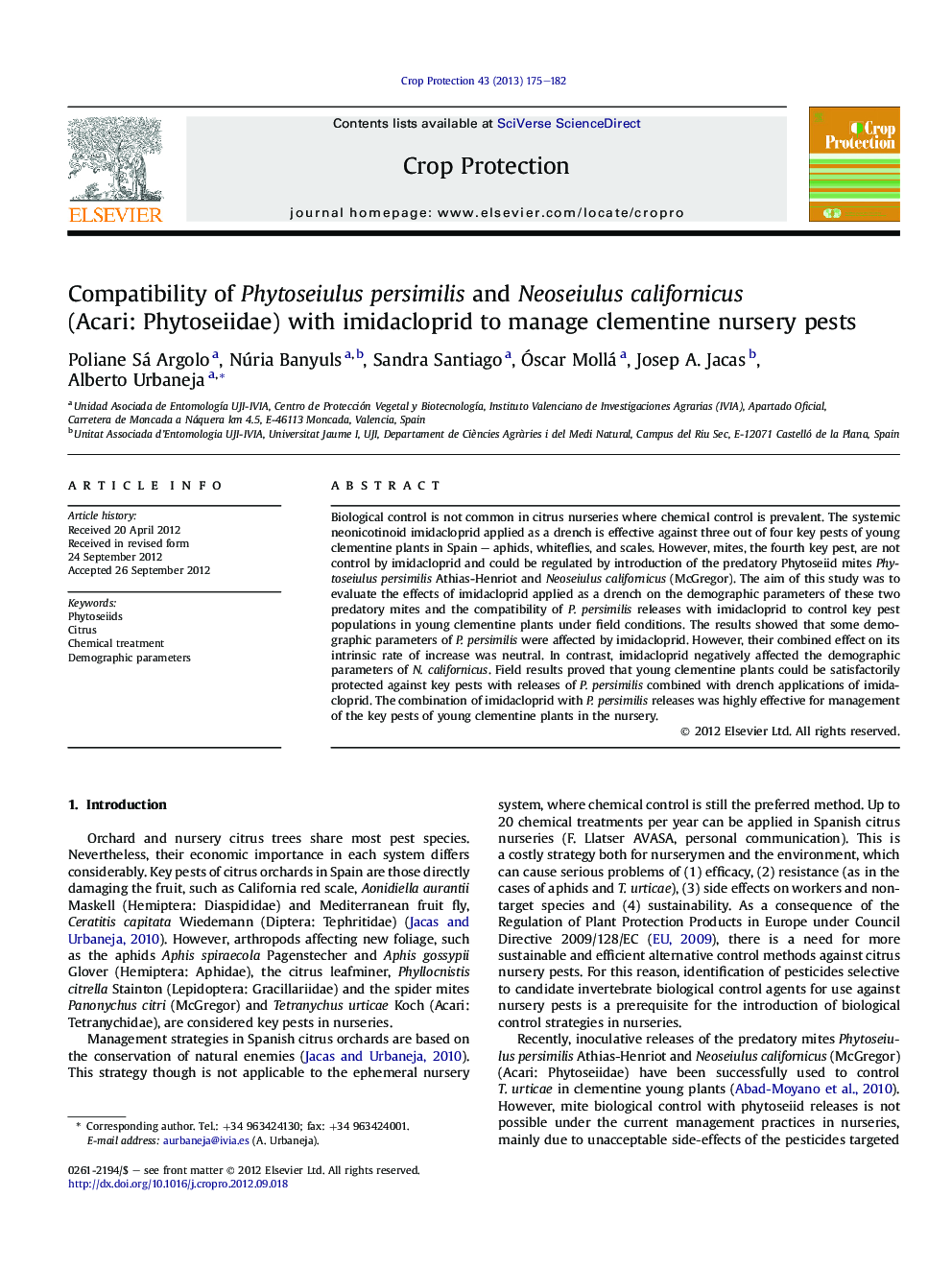| Article ID | Journal | Published Year | Pages | File Type |
|---|---|---|---|---|
| 4506116 | Crop Protection | 2013 | 8 Pages |
Biological control is not common in citrus nurseries where chemical control is prevalent. The systemic neonicotinoid imidacloprid applied as a drench is effective against three out of four key pests of young clementine plants in Spain – aphids, whiteflies, and scales. However, mites, the fourth key pest, are not control by imidacloprid and could be regulated by introduction of the predatory Phytoseiid mites Phytoseiulus persimilis Athias-Henriot and Neoseiulus californicus (McGregor). The aim of this study was to evaluate the effects of imidacloprid applied as a drench on the demographic parameters of these two predatory mites and the compatibility of P. persimilis releases with imidacloprid to control key pest populations in young clementine plants under field conditions. The results showed that some demographic parameters of P. persimilis were affected by imidacloprid. However, their combined effect on its intrinsic rate of increase was neutral. In contrast, imidacloprid negatively affected the demographic parameters of N. californicus. Field results proved that young clementine plants could be satisfactorily protected against key pests with releases of P. persimilis combined with drench applications of imidacloprid. The combination of imidacloprid with P. persimilis releases was highly effective for management of the key pests of young clementine plants in the nursery.
► Imidacloprid by drench reduced the demographic parameters of Neoseiulus californicus in citrus. ► It did not affect the demographic parameters of Phytoseiulus persimilis in citrus. ► It reduced infestations of Phytoseiulus citrella and aphids in clementine. ► In combination with P. persimilis releases it may control the main citrus nursery pests.
